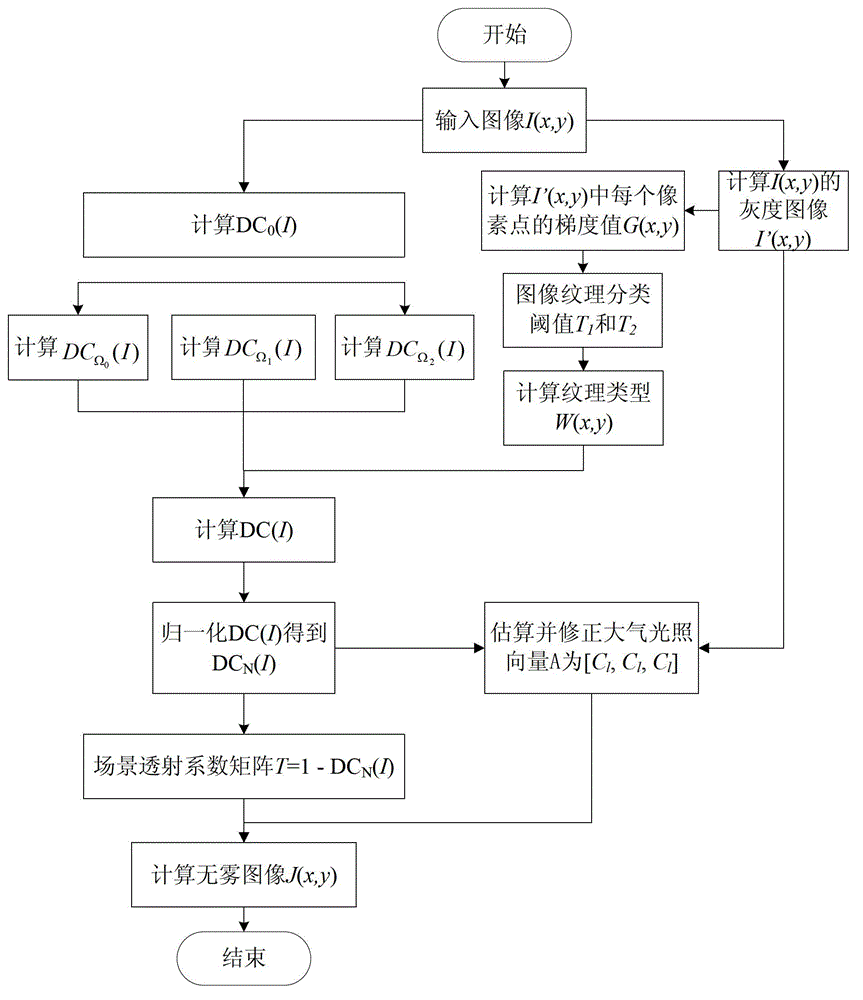Adaptive image defogging method based on textures
An adaptive and texture technology, applied in the field of image processing and computer vision, can solve problems such as difficult to achieve real-time processing of foggy image dehazing, difficult to use, etc.
- Summary
- Abstract
- Description
- Claims
- Application Information
AI Technical Summary
Problems solved by technology
Method used
Image
Examples
Embodiment 1
[0036] refer to figure 1 , the present invention adopts the following steps to realize the image defogging method based on texture adaptation of input image I (x, y):
[0037] Step S101: First, convert the input image I(x, y) to the RGB color space, and calculate the minimum value of each color channel of all pixels in the image in the RGB color space, and obtain the initial dark channel statistics of the input image I(x) Value DC 0 (I), namely formula (11):
[0038] DC 0 ( I ) = min c ∈ ( r , g , b ) ( I c ( x , y ) ) ...
PUM
 Login to View More
Login to View More Abstract
Description
Claims
Application Information
 Login to View More
Login to View More - R&D
- Intellectual Property
- Life Sciences
- Materials
- Tech Scout
- Unparalleled Data Quality
- Higher Quality Content
- 60% Fewer Hallucinations
Browse by: Latest US Patents, China's latest patents, Technical Efficacy Thesaurus, Application Domain, Technology Topic, Popular Technical Reports.
© 2025 PatSnap. All rights reserved.Legal|Privacy policy|Modern Slavery Act Transparency Statement|Sitemap|About US| Contact US: help@patsnap.com



